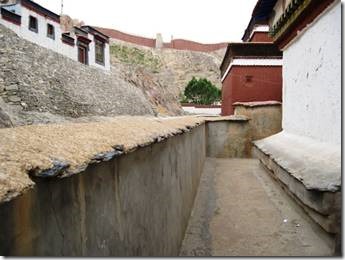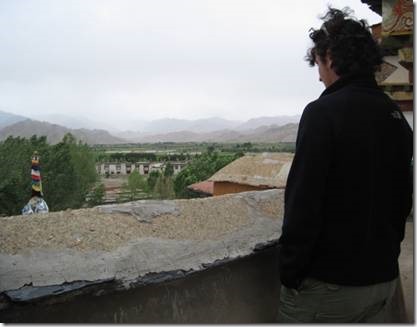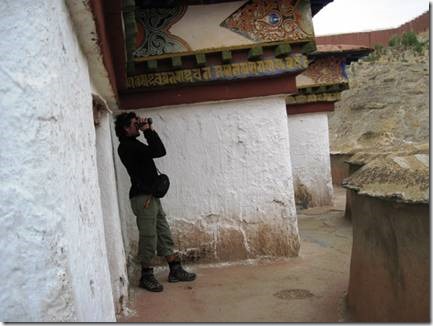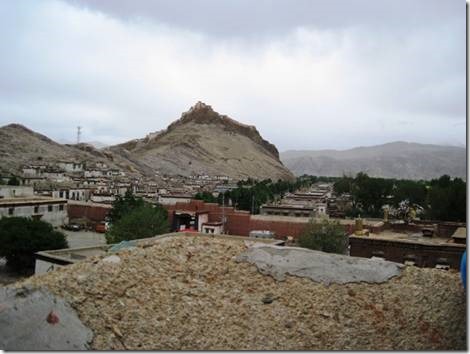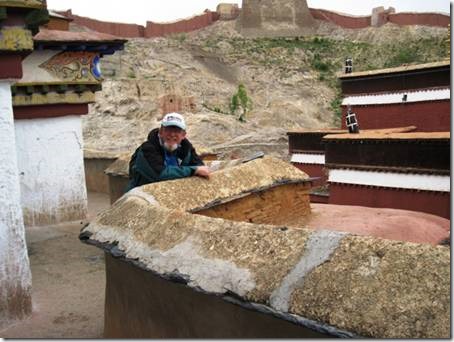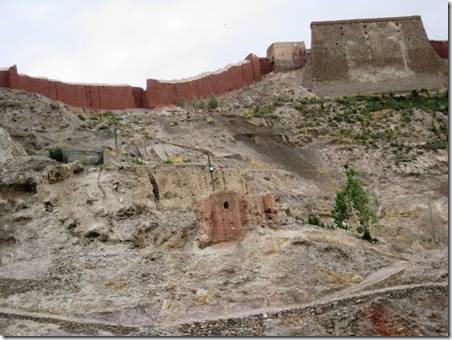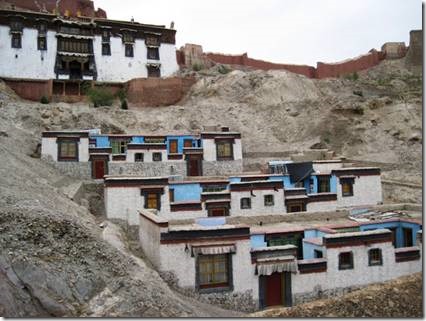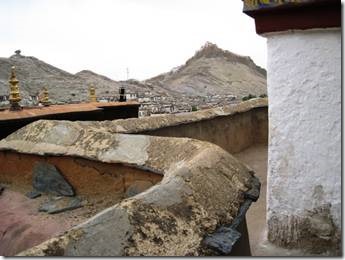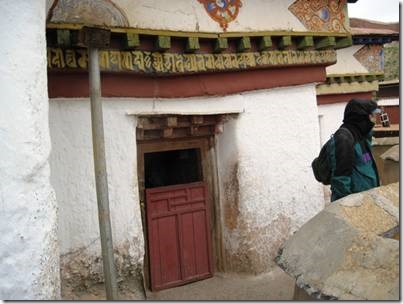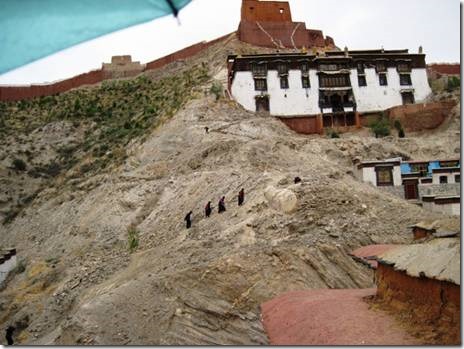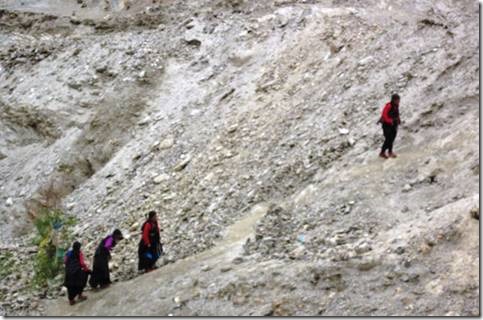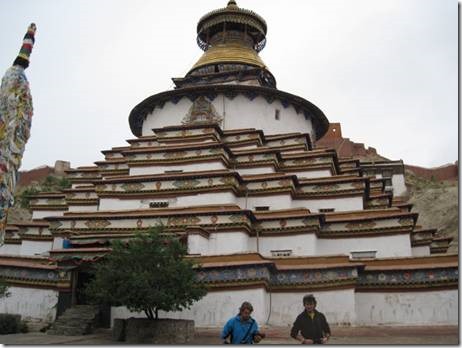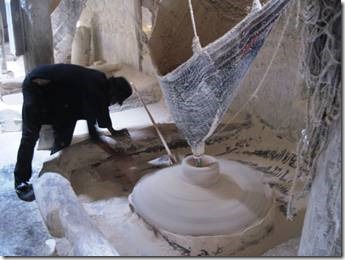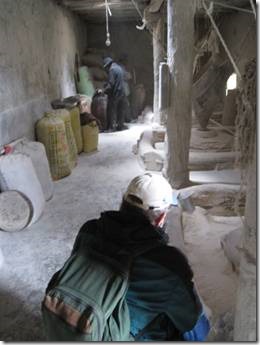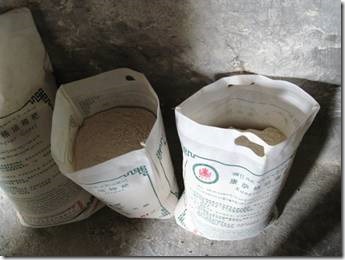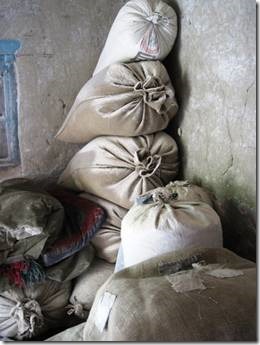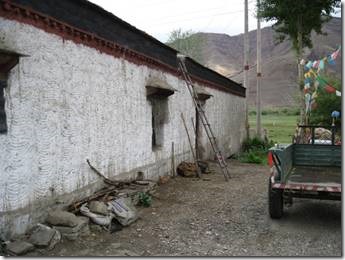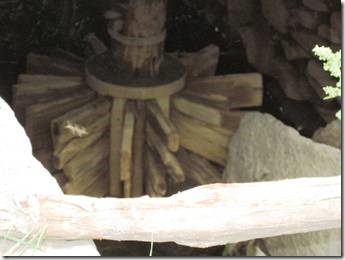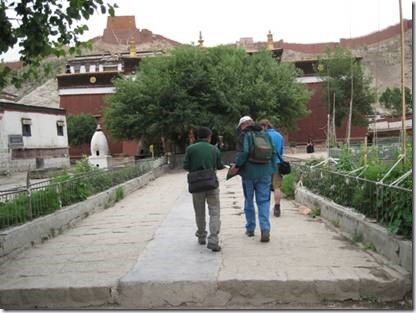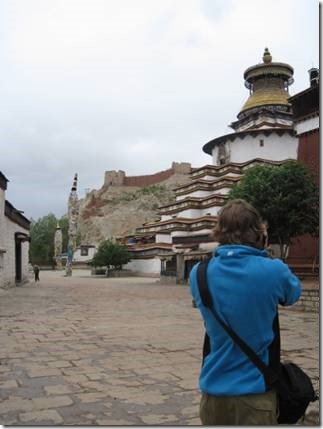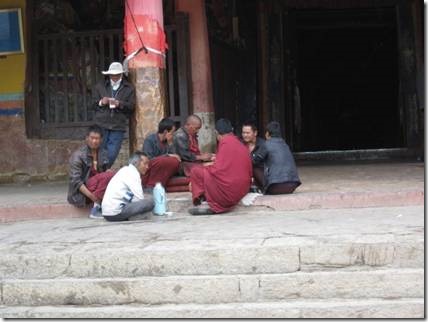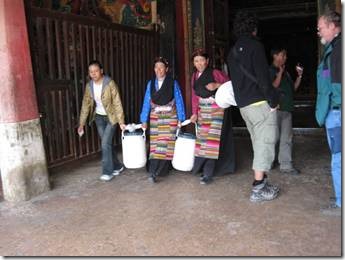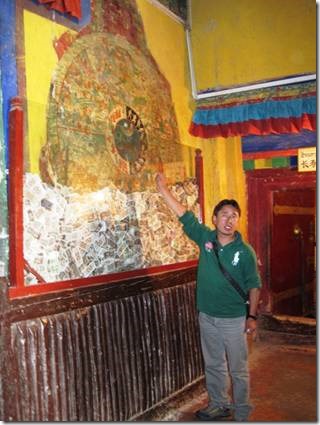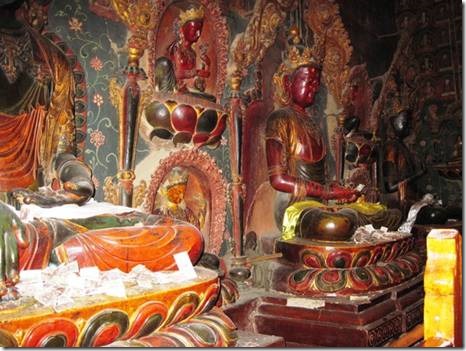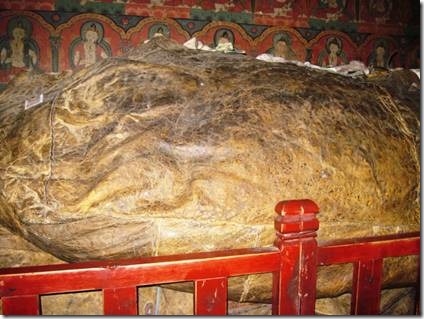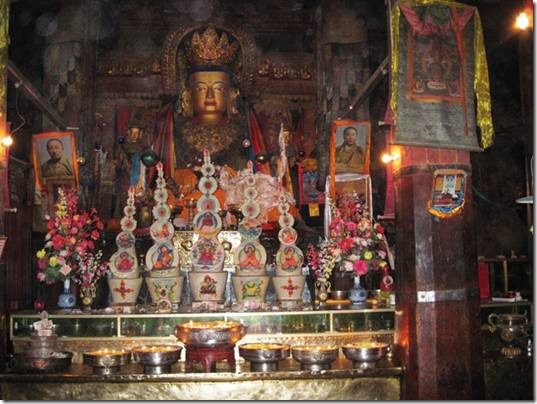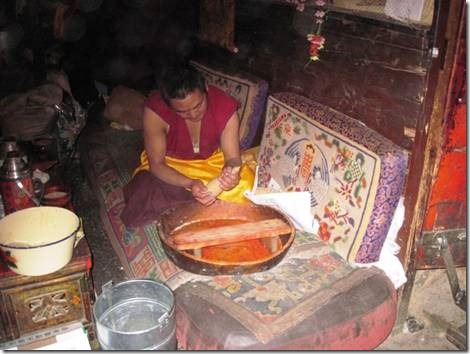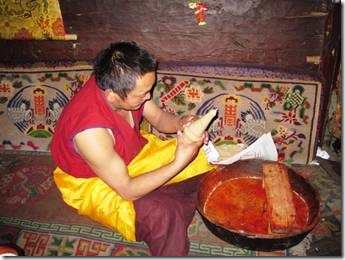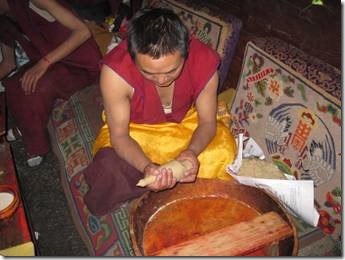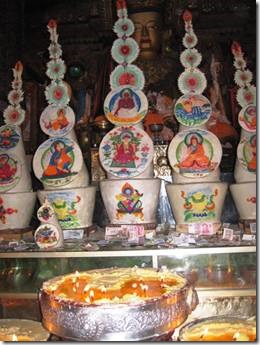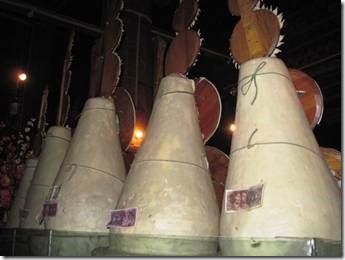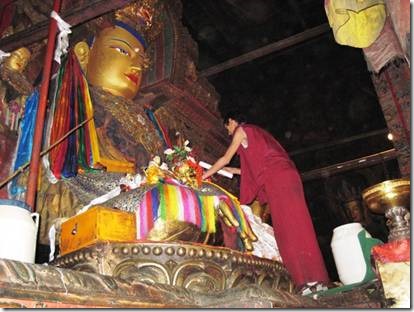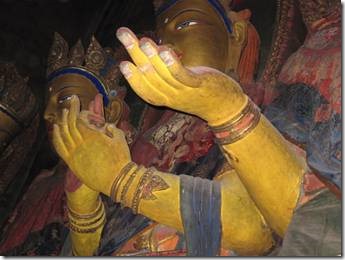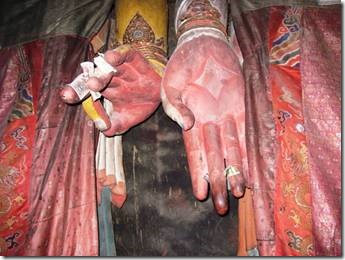Puteri Harbour Marina
Johor, Malaysia
Hi All,
I feel as if I’m spending more time writing these emails about our trip than we actually spent in Tibet. I might be learning more about Tibet too as I research so I can explain the photos to you.
Ru
DoraMac
Tibet # 13 Lhasa to Shigatse Pelkor Monastery – part 2
It was like walking the walls of a castle.
David, hands in his pockets, without his trusty video-camera.
I had my camera with me and was taking photos when I noticed that David didn’t have his camera. You had to check them or pay to take photos outside too. I hadn’t known that and my camera was small enough to be in my backpack so with no one around to monitor things, I definitely was faced with a moral dilemma. Luckily David decided he wanted to take photos as we walked along the walls, too, so went back to get his camera and Randal gave him money to pay for me to take photos too. At the time we all resented having to pay for photos. But now that I have been reading about the lack of government support and the political restrictions placed on the monasteries and nunneries, I wish I had given them more money. Especially the nunnery in Lhasa.
David with video-camera.
Ronnie and David divided the tasks; Ronnie mostly used his really good still camera with the huge zoom and David took the videos though I think he said that his camera could also take single photos.
Gyantse Dzong (my photo)
“Gyantse Fort or Gyantse Dzong (Jiangzi Dzong) built on the rugged hills surrounding the Gyantze town (once the third largest town in Tibet) has an arresting presence behind the town. The fortress is dated to 1268 and a castle was also built in side by local Prince Phakpa Pelzangpo (1318–1370) who was influential with the Sakyapa overlords. Buddhist guru Butan Rinchen Drub of Zhalu resided here at the invitation of the prince and made it his religious seat. Later, in the 14th century, the palace was moved from the fort to the Gyantse town where Kunga Phakpa had built a larger complex of buildings and monasteries. During this period, he also built a temple on the hill top called the Sampel Rinchenling. However, this is seen only in ruins now except for some murals made in genuine Newari and Gyantse Tibetan styles” http://en.wikipedia.org/wiki/Palcho_Monastery Wikipedia had just about the same exact photo on its website.
Randal only took out his camera when we got to Everest.
You can see a room built into the side of the mountain just behind the top of Randal’s hat and the fort walls behind.
If we had the day to spend here I would have walked up to explore: but we only had about an hour or so because we had to get to Shigatse to get our Everest permits. You need permits for everything: to go to China, then to go to Tibet, then to drive through Tibet, then to go visit Everest……
Some of the buildings that must have been used for residence or classrooms since this was not only a monastery but also a college.
“Other Information – Background: Richardson mentions this site in High Peaks, Pure Earth , London: Serindia Publications, 1998, p. 325, ” … the thriving town of Gyantse (Rgyal-rtse) (1936-50), well-placed for trade with both Shigatse (Gzhis-ka-rtse) and Lhasa and on the route to India. It is rich in art and architecture of the fifteenth century created by the Gtsang prince,Rab-brtan kun-bzang ‘phags-pa. He enlarged and embellished the temple founded by his father near the rdzong which crowns the summit of the great rock overhanging the town. But his greatest achievements were the enlargement or virtual reconstruction of the Dpal-‘khor Chos-sde temple and the building of the magnificent Sku-‘bum mchod-rten (1936-50). The former is the heart of a community of monastic college residences spread over an extensive hillside enclosed by a fortified wall. Although the Sa-skya-pa scholl originally predominated, all other religious schools were represented here.” http://tibet.prm.ox.ac.uk/photo_2001.59.8.79.1.html
After the fact, I am trying to read more about what we saw so that I don’t just show you photos with no explanation of what you are seeing. I have stumbled across some interesting web sites. The Tibet Album is one of those sites with amazing photos showing 30 years of Tibet’s history.
The Tibet Album presents more than 6000 photographs spanning 30 years of Tibet’s history. These extraordinary photographs are a unique record of people long gone and places changed beyond all recognition. They also document the ways that British visitors encountered Tibet and Tibetans.
Featuring photographs taken by Charles Bell, Arthur Hopkinson, Evan Nepean, Hugh Richardson, Frederick Spencer Chapman, Harry Staunton and the previously unidentified photographs of Rabden Lepcha.
Our specially designed functions (maps, zoom, album…) enable you to browse this site in many different ways. Photographs appear in a variety of formats and can be linked to the visual narratives they were originally used for.
This site provides access to the photograph collections of two important British museums – the Pitt Rivers Museum (Oxford) and the British Museum (London).
The Tibet Album is funded by the Arts and Humanities Research Council.
http://tibet.prm.ox.ac.uk/index.php
I loved the way it wasn’t just round but had zigzag corners.
I don’t know what this tiny door led to, but you can see that someone as tall as Randal would have had to bend over to walk in.
These women in local Tibetan dress were walking up the hill behind the temple while I stood under my green umbrella and watched.
Not an easy hike and no high-tech hiking clothing.
Ronnie and David in front of the octagonal stupa.
I wish we’d had time to climb to the fort. I wish I’d paid more attention to the design of the entire complex. And I wish we’d spent more time in Gyantse because I have read that it is much more “traditional Tibet” than either Lhasa or Shigatse.
Our last stop before we arrived in Shigatse was a barley mill where roasted barley kernels were ground into flour. Barley flour is a main staple. This mill fascinated Randal much more than the monastery had.
I was wearing a navy blue wool sweater so the fact that when we left the small mill only one elbow of my sweater was dusted with flour was pretty good.
The finished product. We paid for photos here too.
It was a very small, narrow building.
This was the water wheel that wasn’t being used. The other one was too fast and too blurry to photograph.
The stream provided the power.
Eating barley tsampa…..
http://tsampa.org/tibetan/tsampa/theory_and_practice/ shows the process of mixing the tea and flour to make the traditional staple called Tsampa which Ani the nun in Last Seen In Lhasa always carried with her.
“I once met a foreign girl in Amdo who hadn’t eaten tsampa before. While the mother of the household was preparing her a bowl I could feel the anticipation rising. Soon I would again see a miniature carneval that would end in half of the tsampa being on the floor, with the rest stuck to her fingers like somekind of glue. The Tibetans, clearly more sensitive to her nutritional needs than me and the dog, offered to roll it up for her; to my delight she declined the offer. Several twists and turns later the whole spectacle came to an end. Nearly clean fingers, nothing for the dog. “How did you do that?”, I asked. “I used to do pottery”, came the answer.
Making tsampa is in many ways like working with clay. On the one hand it is a matter of getting the right proportion of ingredients, of balancing the fine line between mud tsampa and sand storm tsampa. On the other hand, it takes a skilled hand to shape it into an edible piece of art without spilling it left and right.”
If you go to the website you can read more and see photos of the process.
Next email Shigatse to Everest!

